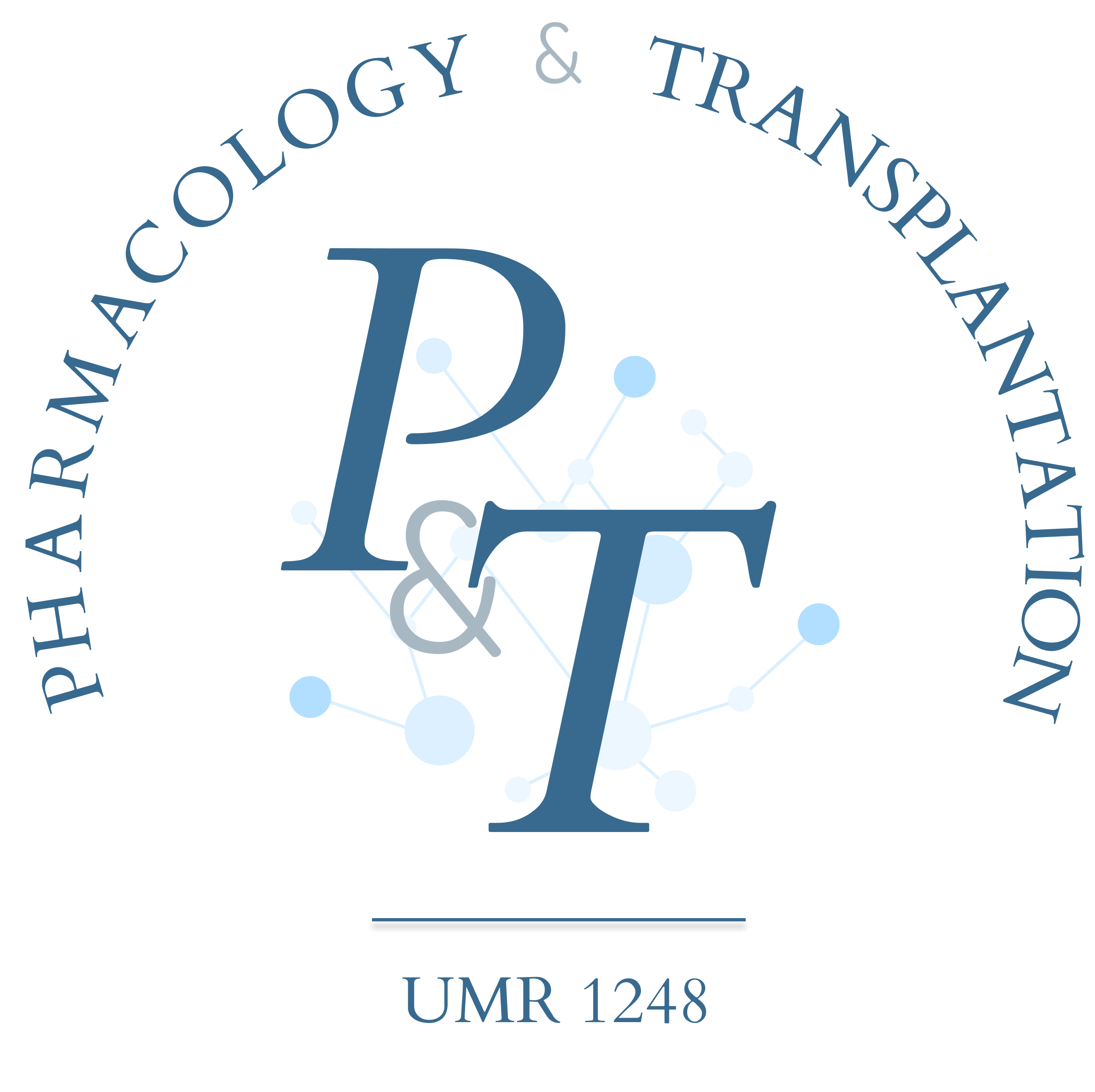Unrevealing Protein-mediated Drug-membrane Transport by Means of Molecular Dynamics Simulations: Toward in Silico Pharmacology
Contact - Information
Florent DI MEO
Patrick TROUILLAS
UMR-1248 INSERM
CBRS – Université de Limoges
1, rue du Pr Bernard Descottes
87000 Limoges
Deadline: 26/06/2019
Documents:
- Resume
- Cover Letter
- Contact for recommandation letter(s)
Funding Source:
Pending for project/applicant acceptation by Univ. Limoges PhD School
Nat. Rev. Drug Discov. 2010, 9, 215-236.
Clin. Pharmacol. Ther. 2013, 94, 19-23.
Nat. Commun. 2015, 6, 8393.
J. Biol. Chem. 2013, 288, 19211-19220.
Proc. Natl. Acad. Sci. 2013, 110, 18916-18921.
J. Chem. Theory Comput. 2014, 10, 2866-2880.
Rep. Prog. Phys. 2008, 71, 126601.
Pharmacol. Res., 2016, 111, 471-486
Pharmacol. Res., 2018.
PhD Project - Computational Chemistry
Recent improvements of supercomputer capacities and reliability of the theoretical models have significantly broadened the field of applications of molecular modelling. Key sites of drug disposition and/or effects can now be modelled by molecular dynamics (MD) simulations, supporting understanding of pharmacokinetics (PK), pharmacodynamics (PD), as well as pharmacogenetics (PGx).
In organ transplantation, the transplant community learned to do better with the same drugs, owing to the lack of new immunosuppressive drugs. PK tools for improved dose individualisation, risk scores and biomarkers were proposed, and, to some extent, adopted by transplant physicians. However, an unexplained variability in immunosuppressive drug (ISD) response and toxicity still remains. This is likely due to the combination of low penetrance or rare variability factors (e.g., drug-drug interactions – DDI –low-penetrance polymorphisms).
There is a need for a deeper understanding of the drug effect and the local concentration at the drug target locations, for which drug-membrane crossing plays a key role. In silico pharmacology may help to model, understand and predict drug-membrane crossing events involved in the relationship between systemic and local PK. Besides, PGx drives both PK and PD. The investigation of PGx/PK and PGx/PD interactions would benefit from the atomic and dynamic description of drug transport, using MD simulations.
In this perspective, the proposal will focus on human membrane transporters that are involved in PK and PD of drugs used in organ transplantation (e.g., ISD, antivirals, antibiotics) and located in the kidney and the liver (namely MRP2/4, OATP1B1/1B3, OAT1/3). These in silicotransporter models will be built including membrane in physiological conditions to simulate (i) the dynamics of the transport cycle, (ii) the influence of different polymorphisms or rare mutations, and (iii) DDI/PGx interactions.
So far, whole molecular structures have not been experimentally resolved. In silico models will be built using homology modelling techniques refined by MD simulations. We recently applied this dual approach to build MRP4, elucidating the former unresolved flexible domains as well as the impact of SNPs on the protein conformation. The molecular understanding of MRP4-like transport cycle is currently under investigation by using the state of the art of MD techniques. Once both structure and transport cycle are elucidated for a given transporter, drug-transporter interactions and DDI will be investigated from in silico model structure at the molecular level. The impact of rare mutations and polymorphisms of clinical interest will be systematically assessed, thus predicting the influence of PGx on transporter functions.
The development of atomic-based in silico pharmacological models of membrane transporters may represent a step forward in the understanding of drug PK and PD by adding a new size- and timescale to PK/PD and PGx tools. The main goal of my project is to provide a comprehensive overview of drug membrane transporter to support experimental and clinical data as a complement to already existing predictive tools.
The PhD candidate will focus on a limited but relevant number of ABC and SLC transporters as well as their interactions with drugs used in transplantation. This project will benefit from the multidisciplinary framework of the INSERM U1248 including in vitro experiments as well as clinical data from patients treated with different drug combinations and different doses.









